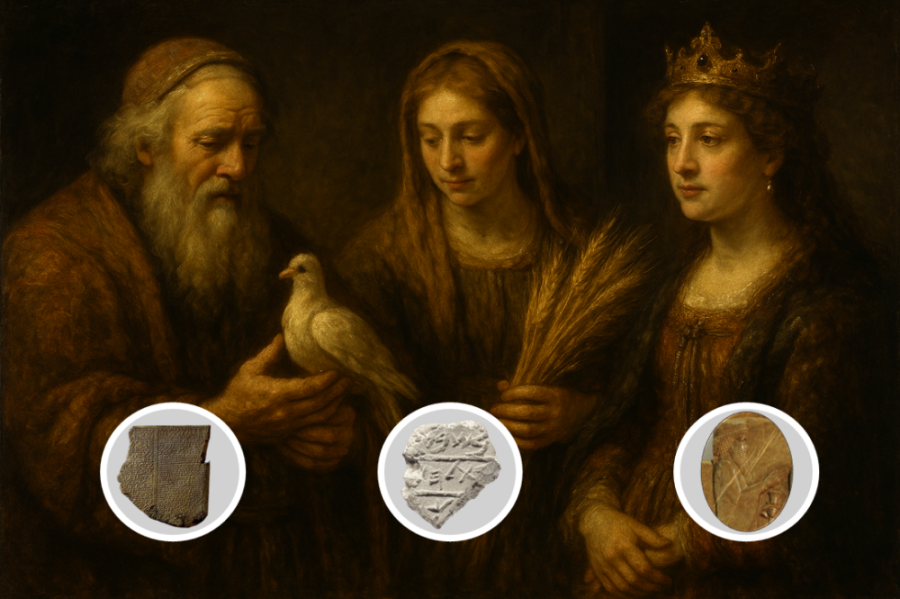Sivan in Archaeology

The month of Sivan packs a powerful punch when it comes to redemptive lines through the ages. It also has a strong connection to two biblical heroines, both of whom have biblical books named after them: Queen Esther and Ruth.

Sivan is mainly known as the month in which the Torah was given to Israel and celebrated during the Festival of Shavuot. The word Shavuot itself means “weeks”, which refers to the counting of the Omer that takes place between Pesach (Passover) and Shavuot. The Omer (a biblical-era measurement of 43 Ounces/1,2 kg) refers to a meal offering made of barley, oil and frankincense that was brought to the Temple the second day after Pesach. Forty-nine days were counted, and on the 50th day, a wheat offering was brought to the Temple. The counting of the Omer serves as a time of “spiritual recalibration”, stretching from a lowly, subdued position at the time of the liberation from slavery in Egypt to reaching an exalted consciousness during the giving of the Torah on Shavuot.
It is exactly at this time that the story of Ruth and Boaz played itself out in the fields and threshing floor near Bethlehem (Beit Lehem). Ruth, a convert to Judaism (“your people will be my people, your G-d will be my G-d”), became the great-grandmother of King David, whose birth and passing fall on Shavuot. You can read more about this powerful trifecta, as well as the historical finds connected to these stories HERE.
Signs of Hope and Salvation – Noah and Queen Esther:

Joining the redemptive theme of the Giving of the Torah and the messianic line of Ruth and David, Sivan also offers the first signs of hope after the catastrophic story of the Great Flood. At the beginning of the month of Sivan, the waters started to recede, and the bottom of the ark touched Mount Ararat. It is during this time that G-d gave the Seven Universal Laws to Noah, known as the Noahide laws.
It is well known that such a universal code of Law existed and was well known even in the times of Abraham, as can be seen in the Code of Hammurabi.
Much evidence from ancient accounts has been found regarding this cataclysmic event:
About 1,700 years after the Flood and 700 years after the story of Ruth, the Jews in Persia faced a threat of total annihilation. G-d raised up and positioned another Jewess, Esther, in the Persian Palace of Ahasuerus in order to save the Jews. On the 23rd of Sivan, the Esther story turns in favor of the Jews when Mordechai is allowed to send out a counter decree for the Jews to protect themselves and kill anyone who means them harm (Esther 8:9-14):
Then were the king's scribes called at that time, in the third month, which is the month Sivan, on the three and twentieth day thereof; and it was written according to all that Mordecai commanded concerning the Jews...
... And they wrote in the name of king Ahasuerus, and sealed it with the king's ring, and sent letters by posts on horseback, riding on swift steeds that were used in the king's service, bred for the king's service, that the king had granted the Jews that were in every city to gather themselves together, and to stand for their life, to destroy, and to slay, and to cause to perish, all the forces of the people and province that would assault them, their little ones and women, and to take the spoil of them for a prey...
Learn more about the geopolitical and historical background, as well as the story of Esther and the daily life of the Jews living in Persia, HERE
Historical and archaeological finds lend validity, context and deeper insights to an already well-known and beloved narrative. Share this with a friend if you learned something new!












